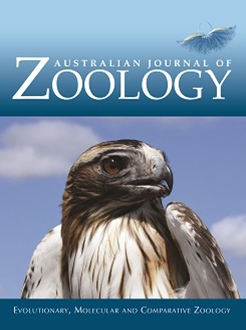Toxoplasma gondii is a ubiquitous protozoan transmitted by felids and infection, morbidity, and mortality occur in numerous marsupial species. This study explores the relationship between cat exposure and Toxoplasma in burrowing bettongs (Bettongia lesueur) in the Arid Recovery Reserve (ARR), South Australia. We estimated seroprevalence, using a modified agglutination test for T. gondii-specific immunoglobulins, in cat-free and cat-exposed bettong populations. Tissue samples collected opportunistically from bettong carcasses and from cats within and around the reserve were screened for T. gondii DNA using multiplex real-time polymerase chain reaction (M-qPCR). Two cats trapped inside the ARR tested positive (50.0%; 95% CI: 15.0–85.0%). All bettongs tested from the cat-free (n = 48) and cat-exposed (n = 19) exclosures were seronegative (95% CI: 0–7.41% and 0–16.82% respectively). We found no evidence of fatal toxoplasmosis, with all bettong carcasses negative on M-qPCR (n = 11). We propose that T. gondii was not detected in bettongs coexisting with cats primarily due to low exposure of bettongs at the time of sampling, possibly due to poor oocyst viability in arid conditions or low shedding by cats. Ongoing screening throughout high and low rainfall years should be conducted to better establish the risk of Toxoplasma to bettongs in the ARR.
How to translate text using browser tools
20 July 2022
Seroprevalence of Toxoplasma gondii in burrowing bettongs (Bettongia lesueur): a comparison of cat-free and cat-exposed populations
Philippa A. McKay,
Jasmin Hufschmid,
Anna L. Meredith,
Patsy A. Zendejas-Heredia,
Katherine E. Moseby

Australian Journal of Zoology
Vol. 69 • No. 5
August 2022
Vol. 69 • No. 5
August 2022
arid zone
Australian native marsupials
feral cats
modified agglutination test
multiplex real-time PCR
parasite
reintroduction





